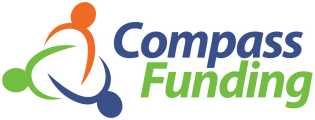아래글을 보시면 Fha 론과 일반 conventional론의 차이점을 보실수 있으시다.
주석을 달자면 Fha론은 Federal Housing Adminstratin에서 직접 융자를 해 주는것이 아니라 단지 gurantee를 Pmi 보험을 들게 하고 융자를 해주는 은행이 손님으로 부터 페이먼을 못 받을 경우의 위험요인을 방지 해 주며 3프로 부터의 낮은 다운 페이먼으로도 손님은 일반 conventional 론보다 용이 하게 집융자를 받을 수 있게 도와 줍니다. 또한 Fha론은 집을 파실 때 사는 바이어에게 융자금액을 비용 없이 이전 시킬 수 있는 장점도 있다.물론 새로운 바이어가 융자조건을 만족 시켜야 한다.
Please explain the difference between a 30-year fixed and a 30-year FHA loan. My understanding is that the conventional fixed-rate loan requires 20 percent down and the FHA loan does not. Also, is there a 15-year FHA loan? I see that fixed rates are lower as well. Thanks in advance. Puzzled Paul
Dear Paul,
The Federal Housing Administration provides a loan guarantee program in lieu of private mortgage insurance so qualified borrowers can get a mortgage loan with a low down payment.
The FHA doesn’t lend you the money, they guarantee the loan, so the lender doesn’t take on a financial risk by extending you credit. The U.S. Department of Housing and Urban Development Web site can help you find HUD-approved counselors in your area who can answer your questions about FHA loans, specific to your situation.
The most popular FHA loan has a minimum cash investment requirement of 3 percent but permits 100 percent of the money needed at closing to be a gift from a relative, nonprofit organization or government agency.
FHA lending guidelines are not as strict as the Federal National Mortgage Association (Fannie Mae) or the Federal Home Loan Mortgage Corporation (Freddie Mac). Sellers must pay part of the closing costs, while some of the borrower’s closing costs can be included in the loan amount.
FHA loans are assumable, meaning you can transfer your loan to the new owner if you sell your house. That allows the new owner to take over your FHA loan without the additional cost of obtaining a new loan. To assume the loan, the buyer has to meet the credit standards for the loan. This feature can make it easier to sell your home.
There are three FHA loan programs:
1. FHA 203(b) fixed-rate mortgage (15- or 30-year loans)
2. FHA 251 adjustable-rate mortgage
3. FHA 2-1 buy-down loans
There’s also an Energy Efficient Mortgages program that allows homeowners to finance adding energy-efficient features to new or existing homes as part of either their home purchase or FHA refinancing.
The biggest disadvantage to FHA loans is the mortgage insurance premium. In most 15- or 30-year FHA loans, the borrower pays 1.5 percent of the loan amount at closing, along with a 0.5 percent annual renewal premium paid annually over the life of the loan.
Unlike private mortgage insurance, the mortgage insurance premium isn’t canceled when the homeowner’s equity reaches a target level. You may qualify, however, for a partial refund of the upfront mortgage insurance premium if you owned your home for less than five to seven years. It’s five years for loans closed after Jan. 1, 2001 and seven years for loans closed before Jan. 1, 2001 and after September 1983.
You need to shop rates when looking for a FHA mortgage just as you would with a conventional loan because the rates are established by the lender, not the government. FHA loan rates are typically higher than conventional (nongovernment guaranteed) loan rates but shouldn’t be a lot higher unless you have credit problems.
Before you start applying for loans you should request a copy of your credit report from at least one of the three major credit bureaus and get a credit score from them as well. Review the report for errors. If you find any, use the dispute-resolution process to correct the report. Bankrate provides contact information for the credit bureaus and a guide to handling the dispute-resolution proc
Read more: http://www.bankrate.com/finance/money-guides/differences-between-fha-and-conventional-mortgages.aspx#ixzz2dhZ230Yb
Follow us: @Bankrate on Twitter | Bankrate on Facebook
 ENG
ENG